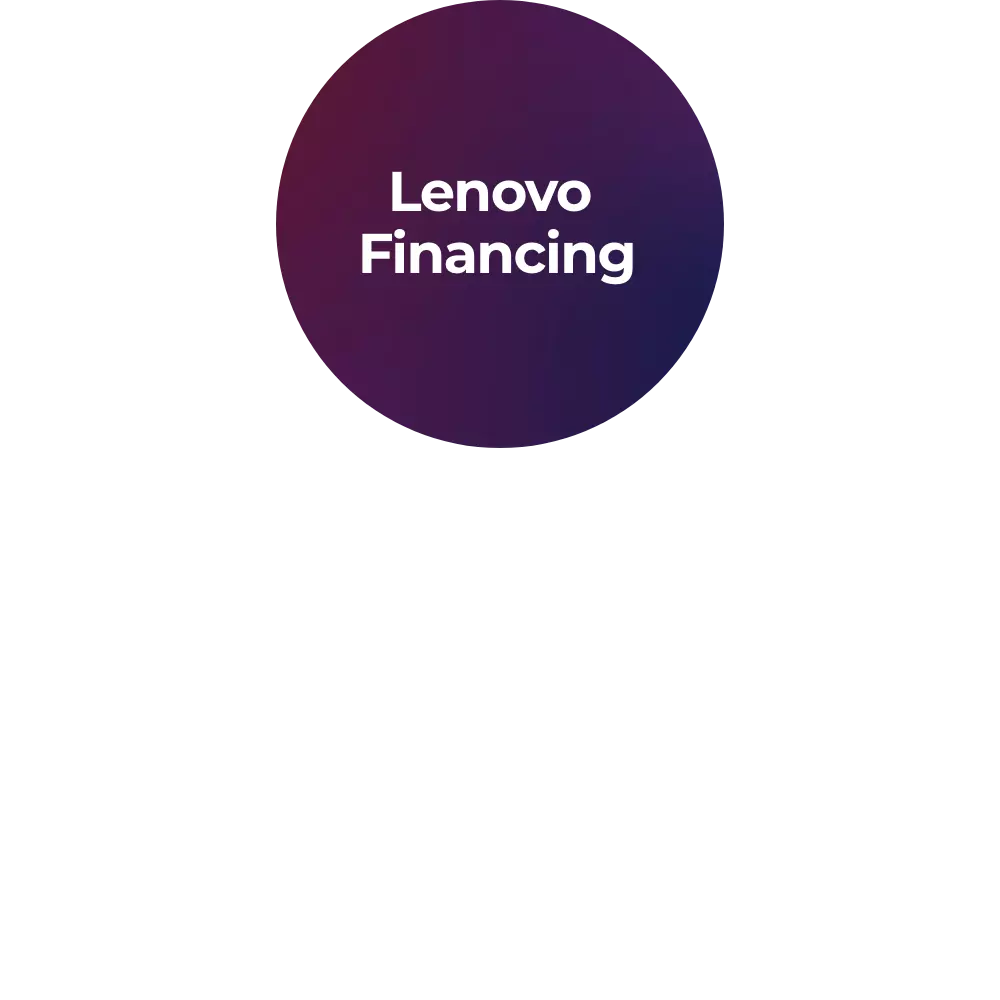What were the major features introduced in Internet Explorer 11?
Internet Explorer 11 brought a host of improvements and new functionalities designed to enhance both user experience and developer capabilities.
- Tab Syncing:Although not fully developed, a new feature aimed to synchronize tabs across devices, offering a glimpse into seamless browsing continuity.
- Developer Tools Overhaul:A significant update was delivered to the developer tools, providing enhanced capabilities for web development.
- Better Display Support:IE11 was optimized for high DPI screens, improving the scaling and clarity of web content on devices with higher resolution displays.
- Enhanced Media and Graphics:The browser incorporated HTML5 components like prerender and prefetch, as well as hardware-accelerated JPEG decoding, enhancing both speed and visual performance.
- Multimedia Accessibility:With support for closed captioning and full-screen viewing in HTML5, the browser improved accessibility for multimedia content.
- Graphics and Gaming Enhancements:Internet Explorer 11 was the first in the series to support WebGL, opening up possibilities for richer 3D graphics and gaming within the browser.
- Faster Browsing with SPDY:Starting with version 3, support for Google's SPDY protocol was introduced, aiming to speed up web page load times and optimize bandwidth usage.
- Advanced Cryptography:New cryptographic technologies (WebCrypto) were added to enhance security.
- Adaptive Bitrate Streaming:The browser supported Media Source Extensions, allowing for smoother video playback by adapting to bitrate changes.
- Encrypted Media Extensions:These were incorporated to secure video streams, protecting digital media content rights.
For Windows 8.1 users, IE11 also brought specialized features:
IE11 set the stage for smoother, more secure, and visually enhanced browsing, marking significant advancements over its predecessors.
What components make up the architecture of Internet Explorer?
Internet Explorer's architecture is a sophisticated system designed using the Component Object Model (COM) technology. Below is a breakdown of its key components, each playing a unique role within this web browser's framework:
- WinInet.dll
This component acts as the protocol handler, managing network communications over HTTP, HTTPS, and FTP protocols.
- URLMon.dll
URLMon.dll is essential for handling MIME types and downloading web content. It also wraps around WinInet.dll and other protocols in a thread-safe manner.
- MSHTML.dll
Known as the Trident engine, this component is crucial for rendering web pages. It parses HTML and CSS to create a Document Object Model (DOM), which the browser engine then uses to display content on-screen. It also provides APIs for inspecting and modifying the DOM during runtime.
- IEFrame.dll
Starting from Internet Explorer 7, IEFrame.dll includes the user interface elements and windows of the browser.
- ShDocVw.dll
This component handles navigation, local caching, and browsing history functionalities, ensuring a seamless user experience.
- BrowseUI.dll
Finally, BrowseUI.dll is responsible for the browser's user interface, managing elements like menus and toolbars.
Together, these components form a cohesive system that enables Internet Explorer to function as a dynamic and effective web browser.
What is the architecture of Internet Explorer based on?
Internet Explorer's architecture is founded on a highly modular design utilizing the Component Object Model (COM) technology. This structure is composed of several distinct components, each encapsulated within its own dynamic-link library (DLL). These components communicate with the Internet Explorer main application, iexplore.exe, to deliver a cohesive browsing experience.
Key Components:
- Protocol Management:
- WinInet.dll:This component is responsible for managing network communications using protocols such as HTTP, HTTPS, and FTP. It ensures seamless data transfer and connectivity for web pages.
- Content Handling:
- URLMon.dll:Serving as the MIME-type handler, this DLL manages the downloading of web content. It provides a secure, multi-threaded interface to handle various protocol implementations effectively.
- Rendering and Display:
- MSHTML.dll:Known for its role in the browser's core (Trident) engine, this component handles the parsing and rendering of HTML and CSS, translating them into a Document Object Model (DOM) for display. It offers a range of APIs for developers to interact with the DOM.
- User Interface:
- IEFrame.dll:This DLL contains the elements needed for the browser's window and interface in versions 7 and upwards. It is essential for generating the graphical layout users interact with.
- Navigation and History:
- ShDocVw.dll:Facilitating browser navigation, it also manages local caching and maintains a history of visited pages.
- UI Elements:
- BrowseUI.dll:Responsible for visual aspects such as menus and toolbars, this component enhances user interaction and experience.
Scripting Capabilities
Internet Explorer does not provide inherent scripting functionalities. Instead, MSHTML.dll offers APIs that allow environments like JScript and VBScript to be plugged in for the purpose of manipulating the DOM. Advanced scripting solutions can also be implemented via third-party options, such as ScreamingMonkey, which supports additional scripting languages.
Architectural Innovations
With the release of Internet Explorer 8, a significant shift was introduced termed loosely coupled IE (LCIE). This architectural enhancement separates the core window process from individual tab processes. Each tab operates independently, supporting various integrity levels, and can manage numerous web applications. These processes communicate asynchronously to maintain synchronization. On systems like Windows Vista, security features such as protected mode can influence this process separation to enhance security when accessing certain types of content.
Overall, Internet Explorer's architecture is a composite of specialized components working in tandem to offer a secure, efficient, and interactive browsing experience.
What were the major features introduced in Internet Explorer 7?
Internet Explorer 7 brought several innovative features to enhance the web browsing experience:
- Tabbed Browsing:One of the most notable additions was the introduction of tabbed browsing. This feature allowed users to open multiple web pages within a single window, switching between them easily and uncluttering their desktop space.
- Improved Security:Security enhancements were a priority in this version. It provided a phishing filter to warn users about fraudulent websites, increasing protection against online threats.
- Cleaner Interface:The browser adopted a sleeker design, minimizing the clutter of toolbars and making navigation more intuitive. This clean layout aimed to improve usability and offer a more pleasant browsing experience.
- RSS Feeds Integration:It also introduced support for RSS feeds, making it easier for users to subscribe to and read updates from their favorite websites without manually visiting each page.
- Enhanced CSS and Support for Standards:Developers benefited from better support for CSS and web standards, facilitating easier website creation and improved compatibility.
Released in 2006, Internet Explorer 7 catered to users of Windows XP, Windows Vista, and several server platforms, standing out with these groundbreaking features that streamlined and secured online browsing.
How did Internet Explorer's non-standard behaviors affect web page compatibility with other browsers?
Internet Explorer (IE) played a pivotal role in shaping web technologies, but its introduction of proprietary extensions significantly impacted web page compatibility across different browsers. These deviations from standard norms frequently created compatibility issues, leading to web pages appearing broken in browsers that adhered strictly to standards.
Proprietary Extensions and Compatibility Challenges
IE added unique features to technologies like HTML, CSS, and the Document Object Model (DOM). These modifications meant developers often had to create web pages specifically catering to IE's quirks, neglecting standard-compliant browsers. This need for tailored coding introduced the concept of "quirks mode," a way for other browsers to interpret web pages constructed with IE-specific elements.
For example, IE pioneered the innerHTML property, enabling developers to manipulate HTML content dynamically. Although it became a standard part of HTML5, its initial implementation in IE without wider browser support led to compatibility issues. Similarly, IE's early introduction of the XMLHttpRequest object facilitated AJAX operations, but other browsers lagged in adopting this feature, creating disparate user experiences.
Attempts at Standardization
Despite efforts to align with web standards, some of IE’s innovations were not universally embraced. Microsoft proposed several features for standardization by the World Wide Web Consortium, such as the 'behavior' CSS property and HTML+TIME for media synchronization. Most proposals, however, were either modified significantly or dismissed.
For instance, IE's Vector Markup Language (VML) did not gain immediate acceptance. Instead, it merged with Adobe and Sun's proposals, contributing to the Scalable Vector Graphics (SVG) format, which later became a standard—albeit without immediate support from IE until much later versions.
Additional Non-Standard Features
Other unique IE behaviors included support for vertical text using a syntax unlike any standard recommendations, image effects, and page transitions not found in W3C CSS. IE also allowed for script code obfuscation and the embedding of proprietary font formats, further complicating cross-browser page rendering.
In summary, Internet Explorer’s non-standard behaviors demanded extra effort from developers to ensure web compatibility. As these proprietary features gradually influenced broader standards over time, they served both as a catalyst for innovation and a roadblock to uniform web development practices initially. This dichotomy shaped the landscape of internet technology and ultimately led to a more collaborative approach to adopting web standards.
What standards does Internet Explorer support?
Internet Explorer has a varied history when it comes to supporting web standards. The browser, using its MSHTML (Trident) engine, embraces a mix of established and emerging technologies:
- HTML and CSS:Internet Explorer supports HTML 4.01 and parts of HTML5. For styling, it adheres to CSS Levels 1 through 3. As of version 8, Internet Explorer achieved substantial compliance with CSS 2.1 standards, with version 9 boasting a high score in the official conformance tests.
- XML and DOM:The browser aligns with XML 1.0 and DOM Level 1, though certain implementation details may cause minor discrepancies.
- XSLT:Full support is offered for XSLT 1.0, alongside an older Microsoft-specific version known as WD-xsl. Future compatibility with XSLT 2.0 is anticipated, although release dates remain unspecified.
- XHTML and SVG:Starting with Internet Explorer 9, support for XHTML is included, provided documents adhere to HTML compatibility principles and are served with a text/html MIME-type. The same version also introduces limited support for SVG, notwithstanding the exclusion of SMIL, SVG fonts, and filters.
Rendering Modes
Internet Explorer uses a method called DOCTYPE sniffing to determine between standards mode and a legacy "quirks mode." This quirks mode emulates nonstandard behaviors from older browser versions for HTML and CSS on-screen rendering. However, printing always defaults to standards mode.
Scripting
In the realm of programming languages, Internet Explorer offers its version of ECMAScript known as JScript. This ensures developers can utilize scripting capabilities while working within the browser ecosystem.
What were the results of security comparisons between Internet Explorer and other browsers?
When comparing the security performance among web browsers, Internet Explorer (IE) often emerged as a focal point due to its numerous vulnerabilities. Over the years, IE faced significant criticism, with many security lapses facilitating the spread of spyware, adware, and viruses. These incidents often occurred through drive-by installs, where merely viewing a malicious webpage could lead to infection.
The browser's security issues weren't always direct flaws in its code. Instead, many originated from ActiveX-based add-ons, which bore significant risks due to their elevated privileges in the system. Despite some industry voices suggesting these dangers were exaggerated, heightened scrutiny revealed numerous vulnerabilities. Enhanced security features in later versions of the browser attempted to mitigate these concerns.
In terms of response speed to vulnerabilities, research indicated that IE lagged behind its competitors. Notably, in 2008, a report highlighted Microsoft’s slower reaction time in addressing security holes and deploying necessary patches. Additionally, the same year saw a notable increase in reported vulnerabilities connected to ActiveX controls.
Furthermore, long-standing issues plagued IE's security reputation. In one case, a critical vulnerability discovered in 2008 remained unpatched for over 600 days, partly due to Microsoft's assessment of its low severity. Such delays in patching were notably longer than the response times generally observed in competing browsers, contributing to an image of slower responsiveness.
Despite efforts to improve, weaknesses persisted, as seen in 2010 when researchers found a way to bypass security features such as IE's "Protected Mode." Overall, in security comparisons, IE was often seen as less agile and responsive than its counterparts, which regularly showcased quicker update cycles and more robust defenses against evolving digital threats.
What are some of the security features introduced in Internet Explorer 7 and 8?
Internet Explorer 7 and 8 brought significant security enhancements to the table, focusing on safeguarding users from online threats.
Key features introduced in these versions include:
- Phishing Filter in Version 7:This tool helps users stay away from deceptive websites designed to steal personal information. It scans for phishing attempts and restricts access to such sites unless the user explicitly chooses to proceed.
- Enhanced Protection in Version 8:Expanding on its predecessor, this version takes an additional step by blocking access to websites identified as distributors of harmful software. This ensures users are not exposed to potential malware threats.
- Download Evaluation: Both versions employ a system to check files during the download process, identifying and alerting users if a file is recognized as malware-infected. This proactive approach adds an extra layer of protection by stopping malicious software before it reaches the user’s device.
These enhancements mark a deliberate move towards a more secure browsing environment, emphasizing user safety against prevalent online dangers.
What engines did Internet Explorer use?
Internet Explorer utilized two primary engines to power its operations. The first was known as MSHTMLor Trident, which was responsible for rendering the web pages you viewed. This engine was designed to interpret HTML, CSS, and other web technologies, ensuring that content appeared correctly on your screen.
The second engine was Chakra, an advanced script engine specifically created to handle JavaScript. This engine played a crucial role in executing the scripts that make websites dynamic and interactive, enhancing the overall browsing experience.
Together, these engines worked in tandem to deliver the functionality and accessibility that users expected from a web browser.
How did Internet Explorer handle extensibility and add-ons?
Internet Explorer (IE) offered a robust system for extensibility through Component Object Model (COM) interfaces, enabling developers to enhance the browser's functionality. This extensibility was categorized into two primary areas: browser extensibility and content extensibility.
Browser Extensibility
This type of extensibility allowed for the addition of features to the browser's interface. Developers could add context menu items, toolbars, and menu options, or even implement Browser Helper Objects (BHOs). BHOs were particularly valuable for extending the browser's capabilities behind the scenes. Other interface enhancements, such as new toolbar entries, made these features accessible to the user.
Content Extensibility
Content extensibility enabled Internet Explorer to support additional file formats and protocols beyond its native capabilities. This functionality allowed the browser to handle new types of media and data formats, such as the WebM video format or SPDY protocol. Moreover, ActiveX controls provided a method for integrating interactive elements within web pages exclusively on Windows systems, with notable examples including plugins like Adobe Flash Player and Microsoft Silverlight.
Ensuring Security and Performance
Recognizing the security risks associated with malicious add-ons, Internet Explorer implemented various safeguards:
- Introduced in version 6 with Service Pack 2, this tool enabled users to control add-ons by allowing them to enable or disable specific extensions.
- No Add-Ons Mode:No Add-Ons Mode:
- Performance Monitoring:With the release of Internet Explorer 9, a new feature called Add-on Performance Advisor was introduced. This tool alerted users when an add-on negatively impacted browser performance, displaying notifications in the Notification Bar at startup.
- Privilege Restrictions:Starting with Windows Vista, both the browser and its BHOs operated with limited system privileges, which isolated them from the main system to enhance security.
Add-on Manager:
Transition to Modern Practices
With the evolution of operating systems like Windows 8 and Windows RT, Internet Explorer adapted by offering a Metro-style version, which was completely sandboxed and unable to run add-ons. This version prioritized security by eliminating the execution of add-ons altogether. Furthermore, Windows RT imposed restrictions preventing the download or installation of new ActiveX controls, although pre-installed ones could still be utilized within the traditional Internet Explorer environment.
Through these measures, Internet Explorer aimed to balance functionality with the vital need for security and performance, adapting its approach to extensibility as technology and security landscapes evolved.
How does Internet Explorer manage caching?
When you browse with Internet Explorer, it efficiently manages web content by storing it in a special folder known as the Temporary Internet Files. This process allows you to access web pages faster even when offline, because previously visited content doesn't need to be downloaded again.
At the core of this caching mechanism is a system of index files, primarily known as Index.dat. These files play a crucial role in keeping track of various types of web content, including visited pages, web feeds, URLs, and cookies.
In versions prior to Internet Explorer 7, clearing the cache was somewhat problematic. Although the index would be refreshed, the actual cached files often lingered behind, which could compromise security and privacy.
With the advent of Internet Explorer 7 and beyond, this was addressed more effectively. When the cache is purged in these versions, the actual files are more thoroughly removed. Additionally, the Index.dat files are overwritten with null bytes, ensuring that traces of previous content are minimized.
In later versions, specifically Internet Explorer 9 and onwards, caching underwent further enhancements, making the process even more streamlined and secure. These improvements not only boost performance but also provide better protection for your privacy while surfing online.
What are some non-standard extensions introduced by Internet Explorer?
Internet Explorer (IE) is known for introducing a variety of proprietary extensions and features that deviated from web standards. These innovations often aimed to enhance web functionalities but resulted in compatibility challenges with other browsers.
DOM Enhancements:
- IE pioneered the innerHTML property, which allowed direct manipulation of HTML content within an element. While initially exclusive to IE, it later became a part of HTML5 and widely adopted.
- Introduction of the XMLHttpRequest object revolutionized web interactions by enabling the execution of AJAX operations. This advancement allowed web pages to send and receive data asynchronously.
Content Editing and Text Layout:
The designMode attribute made it possible to enable rich text editing directly within HTML documents, laying the groundwork for interactive web applications.
HTML and CSS Extensions:
Proprietary elements like the Ruby character extension, which enhanced annotation possibilities in HTML, were among the few to gain acceptance in certain web standards.
Vector Graphics and Multimedia:
The VML (Vector Markup Language) format was an initial attempt to standardize vector graphics within web pages. Although it wasn't widely accepted in its original form, it contributed to the development of more robust standards like SVG (Scalable Vector Graphics).
Behavior-Driven Developments:
- The behavior CSS property introduced a way to link HTML elements with scripts, enabling enhanced interactivity that predated modern frameworks.
- HTML+TIME, brought forward by IE, aimed to synchronize timing and media, although it faced resistance in standardization efforts.
Unique Visual Effects:
- IE offered support for vertical text and specialized image effects, which differed significantly from emerging W3C standards.
- Page transitions and other visual effects, exclusive to IE, provided distinct aesthetic enhancements that weren’t commonly available through standard CSS at the time.
Script and Font Handling:
- Features like JScript.Encode allowed for obfuscation of script code, offering a layer of protection and uniqueness to web applications.
- IE supported the embedding of EOT (Embedded OpenType) fonts, allowing web designers greater flexibility in typographic presentation.
While Internet Explorer's proprietary offerings advanced web technology, they contributed to the fragmented landscape of browser compatibility. These innovations, however, laid a foundation that influenced broader standards and the evolution of the web.
What are some of the versions of Internet Explorer made for other platforms?
Internet Explorer has extended its reach beyond just Windows, deploying versions tailored for various platforms and devices. Here's a quick rundown of these diverse versions:
- Gaming Consoles: An exclusive version for the Xbox 360 was crafted, allowing gamers to access the web directly from their consoles.
- UNIX Systems:Versions were developed for operating systems UNIX, catering to Solaris and HP-UX users at the time.
- Mobile and Embedded Devices:Originally named Pocket Internet Explorer, this edition was designed for embedded systems. It was later renamed Internet Explorer Mobile and adapted for Windows CE and Windows Phone.
- Legacy Mobile OS:Specifically for Windows Phone 7, an iteration based on Internet Explorer 7 was also introduced.
These versions expanded Internet Explorer’s presence, offering specialized solutions for different technology environments.
How does Internet Explorer handle favicons?
Internet Explorer began incorporating support for favicons with its fifth iteration. This feature allows the browser to display small icons next to website URLs in the address bar or tab, enhancing the user experience by providing quick visual cues.
Here's how Internet Explorer manages favicons:
- File Format Compatibility:The browser is capable of displaying favicons in multiple file formats. It accommodates PNG and static GIF files, along with the native Windows icon format.
- Enhanced Support in Later Versions:From Windows Vista onwards, Internet Explorer can showcase native Windows icons that include embedded PNG files. This advancement allows for more versatile and richer icon display options.
By supporting these varied formats, Internet Explorer ensures website icons are displayed clearly, contributing to a more visually organized browsing experience.
What were the names used for different versions of Internet Explorer?
Internet Explorer, throughout its evolution, was known by several names, each reflecting its integration within different Windows operating systems.
- Initially, it was identified simply as Internet Explorer.
- In earlier stages, you might have known it as Microsoft Internet Explorer, signifying its direct ties to its parent company.
- As newer versions rolled out, the browser was also referred to as Windows Internet Explorer.
These various names correspond to different phases and updates in its lifecycle, primarily denoting its progression and continued affiliation with the Windows operating systems lineup.














